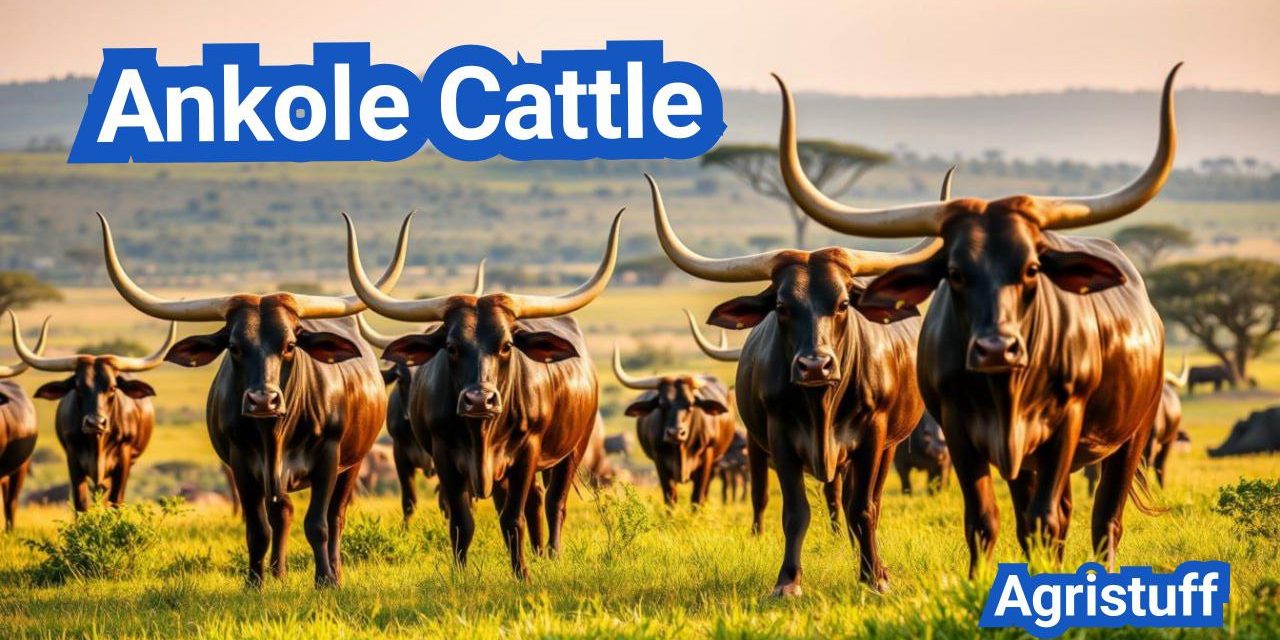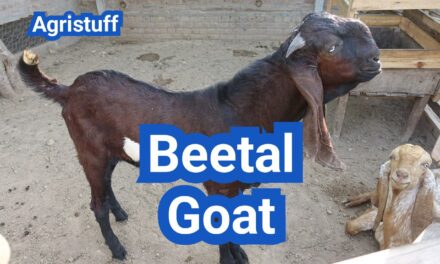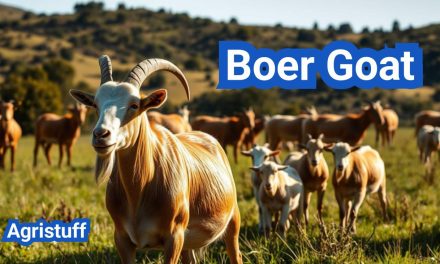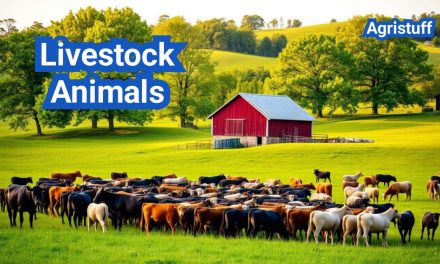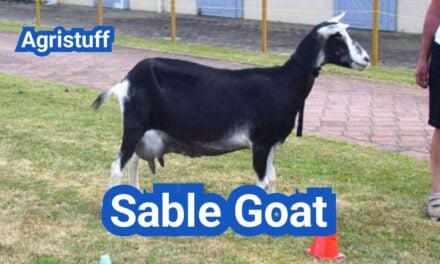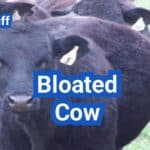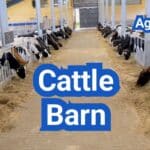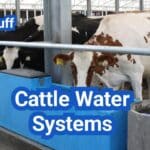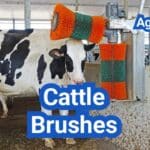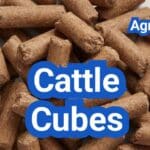The Ankole-Watusi ( Ankole Cattle ), known for their impressive horns, is a notable breed within the Sanga family of African cattle. Originating from Africa, this breed is renowned for its distinctive features and massive horns, making it a standout among exotic cattle breeds.
These long-horned cattle have a rich history and cultural significance, particularly in their native regions. Their unique appearance and characteristics have made them a subject of interest worldwide.
Key Takeaways
- Ankole-Watusi cattle are part of the Sanga family of African cattle breeds.
- They are known for their large, impressive horns.
- The breed has significant cultural and historical importance.
- Ankole-Watusi are considered exotic cattle breeds.
- Their distinctive features make them a subject of global interest.
The Majestic Ankole Cattle: An Overview
One of the most distinctive features of Ankole cattle is their large, impressive horns. These iconic horns are not just a striking appearance; they play a crucial role in the breed’s adaptation to its native climate.
What Makes Ankole Cattle Unique
Ankole cattle are known for several unique characteristics. Their ability to thrive in harsh environments is largely due to their heat tolerance and resistance to diseases. The breed’s robust health and longevity make it an attractive choice for farmers worldwide.
The Significance of Their Iconic Horns
The horns of Ankole cattle are a remarkable feature, serving multiple purposes. They help in thermoregulation, providing a large surface area for heat dissipation. This adaptation is crucial in the hot climates where Ankole cattle originated.
| Feature | Description | Significance |
|---|---|---|
| Horn Size | Large, sometimes reaching up to 6 feet in span | Aids in thermoregulation and defense |
| Heat Tolerance | Ability to withstand high temperatures | Essential for survival in hot climates |
| Disease Resistance | Natural resistance to certain diseases | Reduces the need for veterinary interventions |
Understanding these unique features is essential for appreciating the value of Ankole cattle in various farming contexts. Their iconic horns and hardiness make them a valuable breed for both traditional and modern farming practices.
Historical Origins of Ankole Cattle

With roots tracing back to ancient times, Ankole cattle have been an integral part of East African culture and heritage. Their history is deeply intertwined with the traditions and livelihoods of various African communities.
Ancient Roots in East Africa
The Ankole cattle breed originated in the regions of East Africa, where they have been raised for thousands of years. Archaeological evidence suggests that cattle have been present in this region since ancient times, playing a crucial role in the development of local cultures and economies.
Historical Significance: The Ankole cattle are believed to have descended from the long-horned cattle of ancient Egypt and the Middle East. Over time, they were introduced to East Africa through trade and migration, where they adapted to the local climate and became an essential part of the regional livestock.
Cultural Importance to African Communities
Ankole cattle hold significant cultural and spiritual value in many African communities. They are often considered a symbol of wealth, status, and prosperity.
| Cultural Aspect | Significance |
|---|---|
| Wealth and Status | Ankole cattle are seen as a measure of a family’s wealth and social standing within the community. |
| Spiritual Significance | In some cultures, Ankole cattle are associated with spiritual rituals and ceremonies, believed to bring blessings and good fortune. |
| Traditional Practices | The breed plays a crucial role in traditional practices, including dowry payments and ceremonial events. |
The cultural importance of Ankole cattle is a testament to their enduring legacy in East Africa. Their historical origins and continued presence in local cultures underscore their significance beyond their role as livestock.
Physical Characteristics of Ankole Cattle
Ankole cattle are renowned for their distinctive physical characteristics, which set them apart from other cattle breeds. Their unique features have made them a subject of interest among cattle enthusiasts and farmers alike.
The Magnificent Horn Structure
One of the most striking features of Ankole cattle is their impressive horn structure. The horns are typically large and symmetrical, with some specimens having horns that span over 6 feet from tip to tip. The horn structure is not only a distinguishing characteristic but also serves as a defense mechanism against predators.
The horns are made of keratin, the same protein that makes up human hair and nails. They begin to grow at a young age and continue to develop over the years, with the shape and size varying between individuals.
Body Conformation and Size
Ankole cattle are generally of medium size compared to other cattle breeds. They have a muscular build, with males being larger than females. The body conformation is well-suited for their original environment in East Africa, where they were bred to withstand harsh conditions.
- Males typically weigh between 900-1,200 pounds.
- Females usually weigh between 700-900 pounds.
- The breed is known for its agility and ability to navigate challenging terrain.
Coat Colors and Patterns
Ankole cattle exhibit a wide range of coat colors and patterns, making each individual unique. The colors can vary from solid black, red, or white to various patterns such as spotted or roan.
The coat color is influenced by genetics, and breeding programs often select for specific colors or patterns. The varied coat colors not only add to the aesthetic appeal of the breed but may also play a role in heat regulation and camouflage.
How to Identify Pure Ankole Cattle

The process of identifying pure Ankole cattle involves a thorough examination of several key factors. Breeders and farmers must be meticulous in their assessment to ensure the authenticity and quality of their livestock.
Step1: Examine the Horn Structure
The horn structure is one of the most distinctive features of Ankole cattle. Pure Ankole cattle are known for their large, symmetrical horns. The shape, size, and symmetry of the horns are critical indicators of the breed’s purity.
Step2: Assess Body Characteristics
Assessing the body characteristics of Ankole cattle is another crucial step. Pure Ankole cattle typically have a slender body, long legs, and a deep chest. The overall conformation and size are important factors in determining the breed’s purity.
| Characteristic | Description |
|---|---|
| Body Type | Slender and athletic |
| Legs | Long and lean |
| Chest Depth | Deep and well-sprung |
Step3: Verify Breed Documentation
Verifying breed documentation is essential for confirming the purity of Ankole cattle. Breeders should check for registration papers from recognized Ankole cattle breed associations. This documentation provides a pedigree that traces the animal’s lineage, ensuring it is a pure breed.
By following these steps, breeders and farmers can accurately identify pure Ankole cattle and maintain the integrity of the breed.
Understanding Ankole Cattle Weight and Growth
Understanding the weight and growth rate of Ankole cattle is crucial for effective cattle farming. These cattle are known for their impressive size and unique characteristics, making it essential to monitor their development closely.
Average Weight by Age and Gender
Ankole cattle’s weight varies significantly by age and gender. Generally, males tend to be larger than females. The average weight of Ankole cattle can range from 900 to 1,300 pounds (400 to 590 kg) for males and 700 to 1,000 pounds (320 to 450 kg) for females.
| Age | Male Average Weight (lbs) | Female Average Weight (lbs) |
|---|---|---|
| 1 year | 400-600 | 350-550 |
| 2 years | 700-900 | 600-800 |
| 3 years and above | 900-1,300 | 700-1,000 |
Monitoring the growth rate of Ankole cattle is vital to ensure they reach their optimal weight. Factors such as nutrition, health, and genetics play a significant role in their development.
Monitoring Growth Rate and Development
Regular monitoring of Ankole cattle’s growth rate helps in early detection of any health issues or nutritional deficiencies. Farmers can adjust feeding programs and healthcare practices accordingly to optimize the cattle’s development.
Key Factors Influencing Growth Rate:
- Nutritional intake and quality of feed
- Health management practices
- Genetic predispositions
- Environmental conditions
By understanding and managing these factors, farmers can improve the overall health and productivity of their Ankole cattle, leading to more successful and sustainable farming practices.
How to Raise Ankole Cattle Successfully

Effective Ankole cattle raising involves a comprehensive approach that includes suitable housing, nutritional feeding programs, and rigorous health management. To ensure the well-being and productivity of these unique animals, farmers must consider several key factors.
Setting Up Proper Housing
Providing adequate shelter is crucial for protecting Ankole cattle from extreme weather conditions. The housing should be well-ventilated, dry, and spacious enough to accommodate the cattle comfortably.
- Ensure the shelter is free from drafts and has adequate bedding.
- Provide enough space for the cattle to stand, turn around, and lie down.
- Use materials that are durable and easy to clean.
Establishing Feeding Programs
A well-balanced diet is essential for the health and productivity of Ankole cattle. The feeding program should include a mix of high-quality hay, grass, and grains tailored to their nutritional needs.
- Provide a diet rich in fiber to support their digestive health.
- Ensure access to clean, fresh water at all times.
- Consider consulting with a nutritionist to formulate the ideal diet.
Implementing Health Management Practices
Regular health checks and vaccinations are vital for preventing diseases and maintaining the overall health of the cattle. Implementing a robust health management plan includes:
- Regular veterinary check-ups.
- Keeping a record of vaccinations and health issues.
- Maintaining a clean environment to reduce the risk of disease.
By focusing on these critical areas, farmers can successfully raise Ankole cattle, ensuring their health, productivity, and well-being.
Ankole-Watusi: The American Variation of Ankole Cattle

The Ankole-Watusi, a distinct variation of Ankole cattle, has gained popularity in the United States for its impressive horns and robust build. This breed has been developed to thrive in various environments, making it a favorite among American cattle breeders.
Differences Between Ankole and Ankole-Watusi
While both Ankole and Ankole-Watusi cattle share a common ancestry, there are notable differences between them. The Ankole-Watusi is known for its larger horn size compared to the traditional Ankole. This characteristic is a result of selective breeding practices in the United States aimed at enhancing the breed’s distinctive features.
Another key difference lies in their physical conformation. Ankole-Watusi cattle tend to have a more muscular build, which is advantageous for meat production. Additionally, their coat colors and patterns can vary, although they often retain the characteristic markings of their Ankole ancestors.
Breeding Standards in the United States
The Ankole Cattle Breeders Society plays a crucial role in maintaining the breeding standards for Ankole-Watusi cattle in the United States. The society sets guidelines for breeders to follow, ensuring that the unique characteristics of the Ankole-Watusi are preserved.
Breeding programs focus on enhancing the desirable traits of the Ankole-Watusi, such as their horn size, body conformation, and overall hardiness. By adhering to these standards, breeders can produce high-quality Ankole-Watusi cattle that meet the expectations of both breeders and consumers.
Key breeding standards include:
- Horn size and shape
- Body condition and muscularity
- Coat color and pattern
- Overall health and fertility
By maintaining these standards, the Ankole Cattle Breeders Society helps ensure the continued success and popularity of the Ankole-Watusi breed in the United States.
How to Leverage Ankole Cattle’s Heat Tolerance

Leveraging the natural heat tolerance of Ankole cattle can revolutionize farming practices in tropical and subtropical regions. Their ability to withstand high temperatures makes them an attractive option for farmers looking to maintain productivity in hot climates.
Understanding Their Natural Adaptations
Ankole cattle have evolved several adaptations that enable them to thrive in hot environments. Their large horns play a crucial role in thermoregulation, allowing them to dissipate heat more efficiently. Additionally, their thin coat and loose skin facilitate heat loss, keeping them cooler in high temperatures.
As noted by cattle experts, “The unique physiology of Ankole cattle makes them exceptionally well-suited to hot climates, where other breeds might struggle to survive.” This natural heat tolerance is a valuable trait that can be leveraged for sustainable farming practices.
Creating Optimal Environments
To maximize the heat tolerance of Ankole cattle, farmers should focus on creating optimal environments. This includes providing adequate shade, ensuring access to plenty of water, and managing grazing patterns to avoid heat stress during the hottest parts of the day.
- Provide shade structures or allow grazing in shaded areas.
- Ensure access to clean, cool water at all times.
- Adjust grazing schedules to early morning or late evening.
Utilizing Heat Tolerance for Sustainable Farming
By leveraging the heat tolerance of Ankole cattle, farmers can adopt more sustainable farming practices. This includes reducing the need for costly cooling measures and minimizing the environmental impact of cattle farming in hot climates.
“Ankole cattle are a prime example of how traditional breeds can offer sustainable solutions for modern farming challenges.”
— Dr. John Smith, Cattle Breeding Expert
The use of heat-tolerant breeds like Ankole cattle is a step towards more resilient and sustainable agricultural practices, especially in the face of climate change.
Breeding and Genetics of Ankole Cattle

The breeding and genetics of Ankole cattle are crucial aspects of maintaining the breed’s purity and enhancing its desirable traits. Effective breeding practices not only ensure the continuation of the breed’s unique characteristics but also contribute to its overall health and productivity.
Selecting Breeding Stock
Selecting the right breeding stock is the first step in a successful Ankole cattle breeding program. This involves evaluating the genetic quality of potential breeding animals based on their pedigree, physical characteristics, and performance records. Key factors to consider include the size and shape of the horns, body conformation, and fertility.
When selecting breeding stock, it’s essential to assess the animal’s genetic diversity to avoid inbreeding, which can lead to a loss of vigor and increased susceptibility to diseases. Genetic testing can be a valuable tool in this process, helping to identify genetic disorders and traits that are not visible through physical examination alone.
Implementing Breeding Programs
Once the breeding stock is selected, the next step is to implement a breeding program that aligns with the goals of the breeding operation. This could involve linebreeding to concentrate desirable traits or outbreeding to introduce new genetic material. The choice of breeding strategy depends on the specific objectives, such as improving milk production, enhancing meat quality, or preserving the breed’s unique characteristics.
A well-structured breeding program also involves maintaining detailed records of breeding activities, including mating dates, birth weights, and growth rates. This information is critical for making informed decisions about future breeding selections.
| Breeding Strategy | Objective | Benefits |
|---|---|---|
| Linebreeding | Concentrate desirable traits | Increases homozygosity, enhances trait expression |
| Outbreeding | Introduce new genetic material | Enhances genetic diversity, reduces inbreeding depression |
Preserving Pure Bloodlines
Preserving the purity of Ankole cattle bloodlines is essential for maintaining the breed’s integrity and unique characteristics. This involves strict selection criteria and careful record-keeping to ensure that only animals with pure ancestry are used for breeding.
Registration with a breed association can provide an additional layer of verification, as it typically involves pedigree analysis and inspection by breed experts. By preserving pure bloodlines, breeders can help ensure the long-term viability and distinctiveness of the Ankole cattle breed.
How to Market Ankole Cattle Meat

Understanding the nuances of Ankole cattle meat is crucial for developing a successful marketing strategy. Ankole beef is known for its unique qualities, including its lean profile and rich flavor, which can be leveraged to attract health-conscious consumers and food enthusiasts.
Step1: Understanding Meat Quality and Characteristics
The first step in marketing Ankole cattle meat is to understand its quality and characteristics. Ankole beef is renowned for its tenderness and rich flavor profile, making it a premium product in the market. The meat is typically leaner than other beef varieties, which appeals to consumers looking for healthier red meat options.
Quality control is essential in maintaining the high standards of Ankole beef. This includes ensuring that the cattle are raised in optimal conditions and that the meat is handled and stored properly to preserve its quality.
Step2: Finding Your Market Niche
Identifying the right market niche is critical for the successful marketing of Ankole cattle meat. Potential niches include high-end restaurants, specialty butcher shops, and health-conscious consumers. Developing a niche marketing strategy involves understanding the needs and preferences of your target audience and tailoring your product and marketing messages accordingly.
- High-end restaurants looking for unique, premium beef options
- Specialty butcher shops catering to customers seeking lean, flavorful meat
- Health-conscious consumers interested in lean protein sources
Step3: Pricing and Promotion Strategies
Effective pricing and promotion strategies are vital for the successful marketing of Ankole cattle meat. Pricing should reflect the premium quality of the product, while also being competitive with other high-end beef products in the market.
Promotion strategies can include:
- Social media campaigns highlighting the unique qualities of Ankole beef
- Collaborations with chefs and food influencers to showcase the product
- Participation in food festivals and events to increase brand visibility
By understanding the quality and characteristics of Ankole cattle meat, identifying the right market niche, and implementing effective pricing and promotion strategies, producers can successfully market this premium product to discerning consumers.
Starting Ankole Cattle Farming in the USA

Embarking on Ankole cattle farming in the USA involves several critical steps. To ensure a successful venture, it is essential to understand the legal, financial, and operational aspects of Ankole cattle farming.
Researching Legal Requirements
The first step in starting Ankole cattle farming is to research the legal requirements. This includes obtaining necessary permits, complying with local zoning laws, and understanding regulations related to cattle farming in your state.
Key legal considerations include:
- Zoning laws and land use regulations
- Health and safety regulations for cattle farming
- Environmental regulations
Finding Reputable Breeders
Once the legal requirements are understood, the next step is to find reputable Ankole cattle breeders. This involves researching breeders, visiting farms, and assessing the quality of their cattle.
Tips for finding reputable breeders:
- Check for breed association memberships
- Read reviews and ask for referrals
- Visit farms to inspect cattle quality
Calculating Initial Investment
Calculating the initial investment is crucial for planning. This includes the cost of purchasing Ankole cattle, setting up infrastructure, and initial operational costs.
| Cost Component | Estimated Cost |
|---|---|
| Purchasing Ankole Cattle | $5,000 – $10,000 |
| Setting Up Infrastructure | $3,000 – $6,000 |
| Initial Operational Costs | $2,000 – $4,000 |
| Total Estimated Initial Investment | $10,000 – $20,000 |
Creating a Business Plan
The final step is to create a comprehensive business plan. This plan should outline your goals, production strategies, marketing plans, and financial projections.
Key components of a business plan include:
- Executive summary
- Market analysis
- Production plan
- Marketing strategy
- Financial projections
By following these steps, you can establish a successful Ankole cattle farming operation in the USA. It is essential to remain informed and adapt to changes in the market and regulatory environment.
Maximizing the Dual-Purpose Benefits of Ankole Cattle

Maximizing the dual-purpose benefits of Ankole cattle requires a comprehensive understanding of their milk production and meat quality. Ankole cattle are renowned for their versatility, offering farmers the opportunity to generate revenue through both milk and meat production.
Establishing Milk Production Systems
To maximize the milk production potential of Ankole cattle, farmers should establish efficient milking systems. This involves selecting appropriate milking equipment, ensuring the health and hygiene of the cattle, and implementing a regular milking schedule.
Efficient Milking Practices: Regular milking not only enhances milk production but also contributes to the overall health of the cattle. Farmers should be trained in proper milking techniques to avoid any adverse effects on the animals.
Developing Additional Revenue Streams
Besides milk production, Ankole cattle can be used for meat production, providing an additional revenue stream for farmers. The quality of Ankole beef is highly regarded, making it a valuable commodity in the livestock market.
- Meat Production: Focus on breeding programs that enhance the meat quality of Ankole cattle.
- Diversification: Consider diversifying farm products to include value-added goods such as cheese and dairy products.
By leveraging both milk and meat production, farmers can significantly enhance their profitability and sustainability in the livestock farming sector.
The Future of Ankole Cattle Farming
The future of Ankole Cattle Farming looks promising, driven by the growing interest in Sustainable Farming practices and the conservation of unique livestock breeds. As farmers and conservationists continue to work together through organizations like the Livestock Conservancy, the Ankole Cattle breed is poised to thrive. By adopting sustainable practices and preserving the genetic integrity of Ankole Cattle, we can ensure the long-term viability of this iconic breed.
As the demand for sustainable and locally sourced meat products grows, Ankole Cattle are well-positioned to capitalize on this trend. With their unique characteristics and adaptability to challenging environments, Ankole Cattle offer a compelling opportunity for farmers and consumers alike. By supporting conservation efforts and promoting Sustainable Farming practices, we can help secure the Future of Ankole Cattle Farming.
FAQ
What is the origin of Ankole cattle?
Ankole cattle originated in East Africa, where they have been bred for centuries and hold significant cultural importance to local communities.
What makes Ankole cattle unique?
Ankole cattle are known for their distinctive large horns, which can span up to 6 feet wide, and their heat-tolerant characteristics, making them well-suited to harsh climates.
How do I identify pure Ankole cattle?
To identify pure Ankole cattle, examine their horn structure, assess their body characteristics, and verify their breed documentation to ensure they meet the breed standards.
What is the average weight of Ankole cattle?
The average weight of Ankole cattle varies by age and gender, with mature bulls typically weighing between 900-1,300 pounds and cows weighing between 600-900 pounds.
How do I raise Ankole cattle successfully?
To raise Ankole cattle successfully, provide proper housing, establish a nutritious feeding program, and implement effective health management practices to ensure their overall well-being.
What is the difference between Ankole and Ankole-Watusi cattle?
Ankole-Watusi is a variation of Ankole cattle bred in the United States, known for their exceptionally large horns, while maintaining the same heat-tolerant characteristics as the original Ankole breed.
Can Ankole cattle be used for milk production?
Yes, Ankole cattle are a dual-purpose breed, suitable for both milk and meat production, making them a valuable asset for farmers looking to diversify their products.
How do I market Ankole cattle meat?
To market Ankole cattle meat, understand its quality and characteristics, identify your target market niche, and develop effective pricing and promotion strategies to attract customers.
What are the legal requirements for starting Ankole cattle farming in the USA?
To start Ankole cattle farming in the USA, research local regulations, obtain necessary permits, and comply with animal health and welfare standards to ensure a smooth operation.
How can I leverage Ankole cattle’s heat tolerance?
To leverage Ankole cattle’s heat tolerance, understand their natural adaptations, create optimal environments, and utilize this trait to develop sustainable farming practices that reduce the need for costly cooling measures.
What is the importance of preserving pure Ankole bloodlines?
Preserving pure Ankole bloodlines is crucial to maintaining the breed’s unique characteristics, such as their heat tolerance and large horns, which are essential to their cultural and economic significance.
Ankole cattle: Overview
Ankole cattle are one of the most visually striking and historically significant African cattle breeds. Known for their massive, curved horns, these animals are not only a symbol of wealth and status in their native regions but also a fascinating subject for farmers and researchers worldwide. Their unique genetics, heat tolerance, and dual-purpose utility (meat and milk) make them a valuable breed, even in modern farming systems. In this article, we’ll explore the history, characteristics, genetics, and farming potential of Ankole cattle, including their presence in the USA.
History and Origins of Ankole Cattle
The Ankole cattle have a rich history dating back thousands of years. Originating in East and Central Africa, particularly in Uganda, Rwanda, and Burundi, they belong to the Sanga cattle group, a cross between Bos taurus (Hamitic Longhorn) and Bos indicus (Zebu cattle) 1013. These cattle were revered by African royalty, earning them the nickname “Cattle of Kings” 14.
Their long, sweeping horns evolved as a defense mechanism against predators like lions and hyenas, while also helping regulate body temperature in harsh climates 8. Cave paintings and Egyptian hieroglyphs depict similar cattle, confirming their ancient lineage 13.
External Link: Learn more about African cattle history from FAO’s Animal Genetic Resources.
Physical Characteristics of Ankole Cattle
The most defining feature of Ankole cattle is their enormous horns, which can span up to 8 feet tip-to-tip and have a circumference exceeding 40 inches 514. These horns are not just for show—they act as natural radiators, circulating blood to cool the animal in extreme heat 14.
Their coat color varies, with red, brown, black, and speckled patterns being common. They are medium-sized, with cows weighing 800–1,200 lbs and bulls reaching 1,000–1,600 lbs 6. Despite their size, they are agile and capable of jumping, a trait that helps them evade predators in the wild 14.
External Link: Explore more about cattle breeds at The Livestock Conservancy.
Ankole Cattle Genetics and Meat Quality
Recent genetic studies highlight why Ankole cattle produce high-quality beef. Research comparing Ankole (Sanga) and Bos indicus breeds identified genes linked to meat tenderness, intramuscular fat, and feed efficiency 4. Key genes like CAPZB, COL9A2, and PKM2 influence muscle structure, while PLA2G2A and ROCK1 affect fat metabolism 4.
These genetic advantages make Ankole beef more tender and flavorful than typical Zebu cattle, positioning them as a premium option for sustainable farming 4.
External Link: For scientific insights, visit BMC Genomics.
Heat Tolerance and Adaptability
One reason Ankole cattle thrive in Africa is their exceptional heat tolerance. Their large horns help dissipate heat, and their digestive systems efficiently extract moisture from sparse vegetation 813. They can endure temperatures ranging from 20°F to 120°F, making them resilient in diverse environments 13.
This adaptability has sparked interest in raising Ankole-Watusi cattle in the USA, particularly in warmer states like Texas and Arizona 6. Their ability to graze on low-quality forage reduces feed costs, appealing to sustainable farmers.
External Link: Read about heat-tolerant breeds at Oklahoma State University Breeds of Livestock.
Ankole Cattle Farming in the USA
The Ankole-Watusi, a modern American derivative of the African Ankole cattle, was established in the 1960s through crossbreeding programs 56. Today, the Ankole Watusi International Registry oversees breed standards, with about 1,500 purebreds in the U.S. 5.
Farmers value them for:
- Low birth weight calves (30–50 lbs), reducing calving difficulties 6.
- High-butterfat milk (up to 10%), ideal for dairy crosses 6.
- Lean, flavorful beef with growing niche market demand 4.
External Link: For U.S. breeding info, visit Ankole Watusi International Registry.
Economic and Cultural Significance
In Africa, Ankole cattle symbolize wealth, status, and tradition. They are used in dowry payments, ceremonial sacrifices, and as currency 8. Their hides, horns, and dung are repurposed for clothing, crafts, and fertilizer 8.
In the USA, they’re prized for eco-tourism, exotic meat markets, and crossbreeding programs 6. A single bull can sell for $2,000–$3,000 in Uganda, while U.S. breeders market them as rare, dual-purpose livestock 11.
External Link: Explore cultural significance at Uganda Tourism Board.
Final Thought
Ankole cattle are more than just a breed with massive horns—they are a testament to genetic resilience, cultural heritage, and farming innovation. Whether you’re a rancher in Texas or a researcher studying heat-tolerant genetics, these African cattle breeds offer unique opportunities. With their rising popularity in the USA, the Ankole-Watusi is proving that ancient breeds still have a place in modern agriculture.
By preserving and promoting Ankole cattle, we honor their history while unlocking their potential for sustainable farming and premium beef production.
External Link: For conservation efforts, visit The Livestock Conservancy’s Ankole Page.
Conclusion of: Ankole Cattle | African Breed with Massive Horns
Ankole cattle are an iconic African cattle breed recognized worldwide for their massive, lyre-shaped horns and striking appearance. Originating from East Africa, particularly Uganda and Rwanda, Ankole cattle hold deep cultural importance and play a vital role in local economies. Beyond their looks, they are known for their hardiness, adaptability, and usefulness in beef, milk production, and ceremonial roles.
What Are Ankole Cattle?
Ankole cattle are part of the Sanga cattle group, a blend of Zebu and local African breeds. They are famous for their enormous horns, which can span up to 8 feet from tip to tip. These horns help regulate body temperature, making them highly adapted to hot climates.
Historical Origin and Cultural Significance
The history of Ankole cattle goes back centuries in East Africa. In Uganda, they are considered a symbol of wealth, status, and cultural heritage. Traditionally, Ankole cattle were not slaughtered for meat but kept for milk, dowry, and ceremonial purposes.
Physical Characteristics of Ankole Cattle
Ankole cattle are medium to large in size, with distinctive long horns, lean bodies, and reddish-brown to dark brown coats. Bulls can weigh up to 1,600 pounds, while cows average 900–1,200 pounds. Their horns are hollow and lightweight, with a honeycomb structure inside.
Adaptability and Environmental Resilience
One of the most valuable traits of Ankole cattle is their adaptability. They thrive in hot, arid environments and can survive on sparse grazing resources. Their horns aid thermoregulation, helping them tolerate extreme heat better than European breeds.
Meat and Milk Production
While primarily valued for milk in their native regions, Ankole cattle also produce lean beef with unique flavor profiles. However, their milk yield is relatively lower than European dairy breeds. In modern farming systems, selective breeding aims to improve both milk and beef productivity.
Economic Role of Ankole Cattle in Africa
Ankole cattle contribute to local economies through milk sales, tourism (due to their distinctive look), and cultural events. Some East African ranches now export Ankole beef internationally, creating new income streams.
Genetic Conservation and Modern Breeding Programs
Due to crossbreeding and changing farming practices, pure Ankole cattle populations are declining. Organizations such as the Ankole Cattle Breeders Society focus on preserving the genetic purity of the breed through controlled breeding programs.
Ankole Cattle Outside Africa
While native to Africa, Ankole cattle have found homes in other regions, including North America. Ranchers in Texas, for instance, raise Ankole cattle for specialty beef markets and as exotic livestock for shows and private collections.
Unique Traits Compared to Other Cattle Breeds
Compared to European breeds, Ankole cattle:
- Have larger horns
- Exhibit higher heat tolerance
- Require less water and feed inputs
- Show stronger disease resistance
Challenges in Raising Ankole Cattle
Despite their hardiness, raising Ankole cattle poses some challenges:
- Lower milk yield compared to dairy breeds
- Slower growth rates for beef production
- Risk of genetic dilution through uncontrolled crossbreeding
Sustainable Farming and Ankole Cattle
Many East African farmers integrate Ankole cattle into sustainable farming practices. Their grazing patterns help maintain grassland ecosystems, while their adaptability reduces the need for intensive feed and veterinary inputs.
Pros of Raising Ankole Cattle
- Iconic horns and cultural value
- High adaptability to harsh environments
- Disease and heat resistance
- Suitable for dual-purpose (milk and beef)
Cons of Raising Ankole Cattle
- Lower production efficiency compared to European breeds
- Requires larger grazing areas due to traditional free-range systems
- Genetic preservation challenges
Finally
Ankole cattle are not just livestock; they are living symbols of African heritage and resilience. With their massive horns and adaptable nature, Ankole cattle offer a unique combination of cultural value and practical farming benefits. For farmers in hot climates, especially in the U.S., Ankole cattle can provide both aesthetic and economic advantages as part of sustainable livestock systems.

